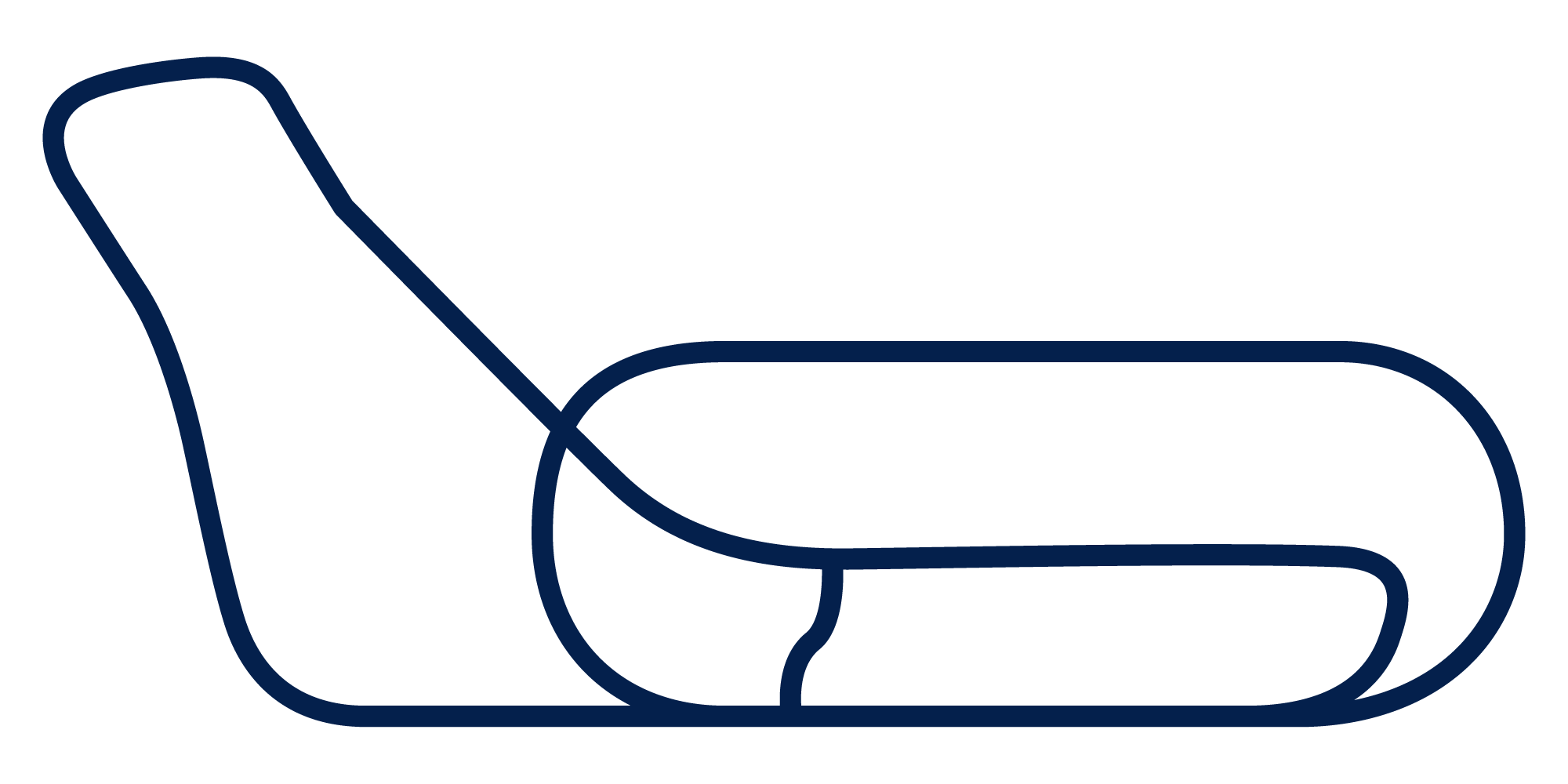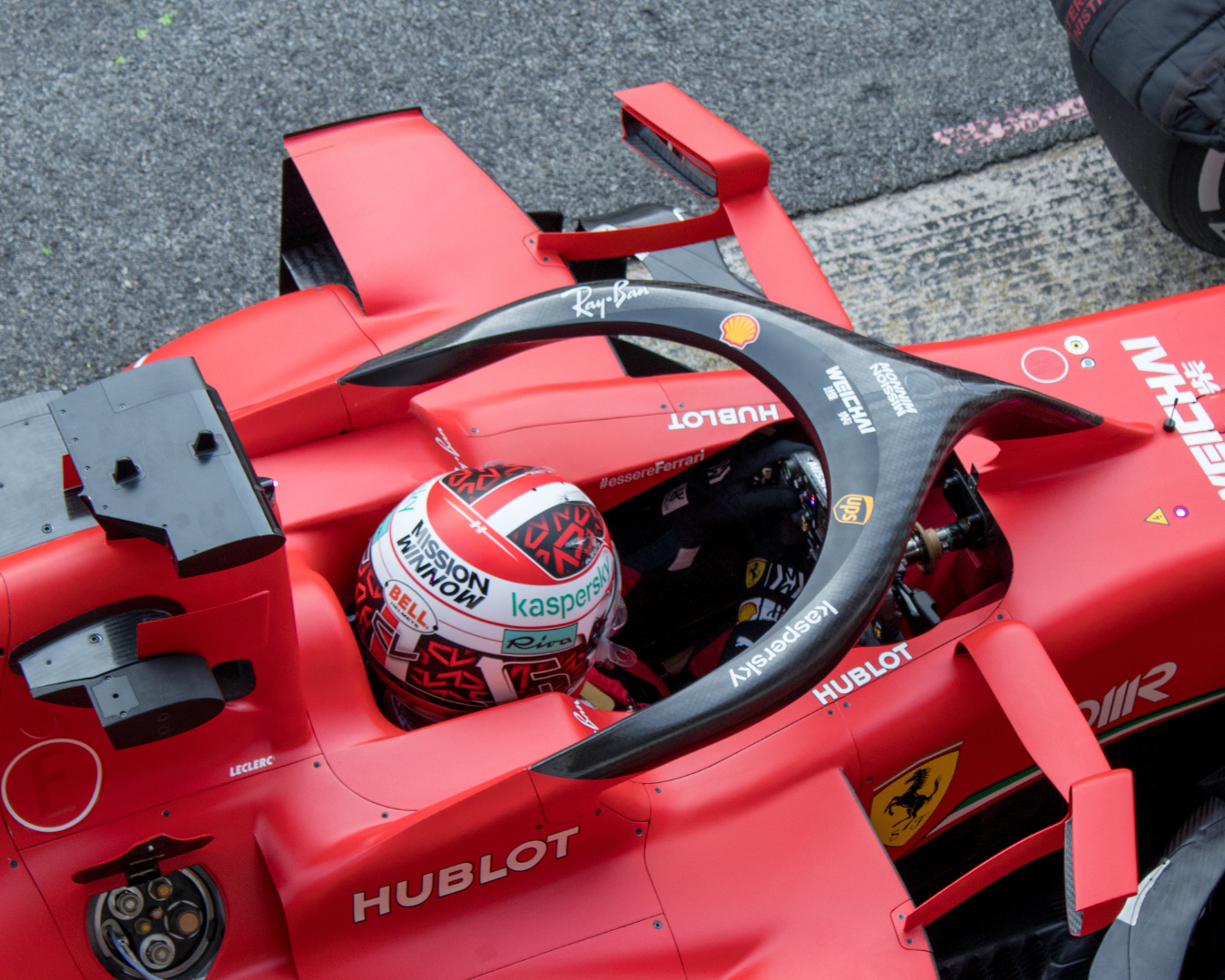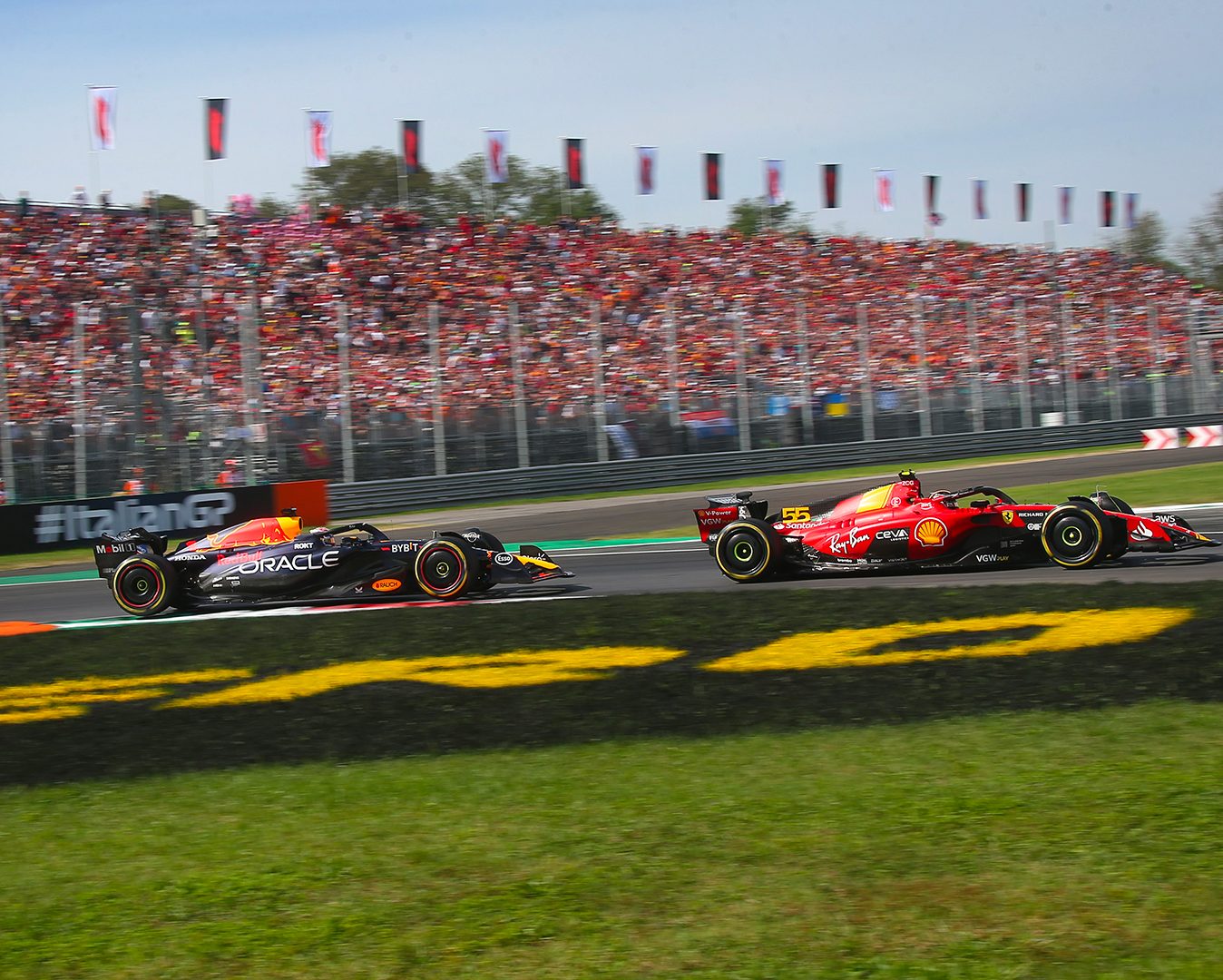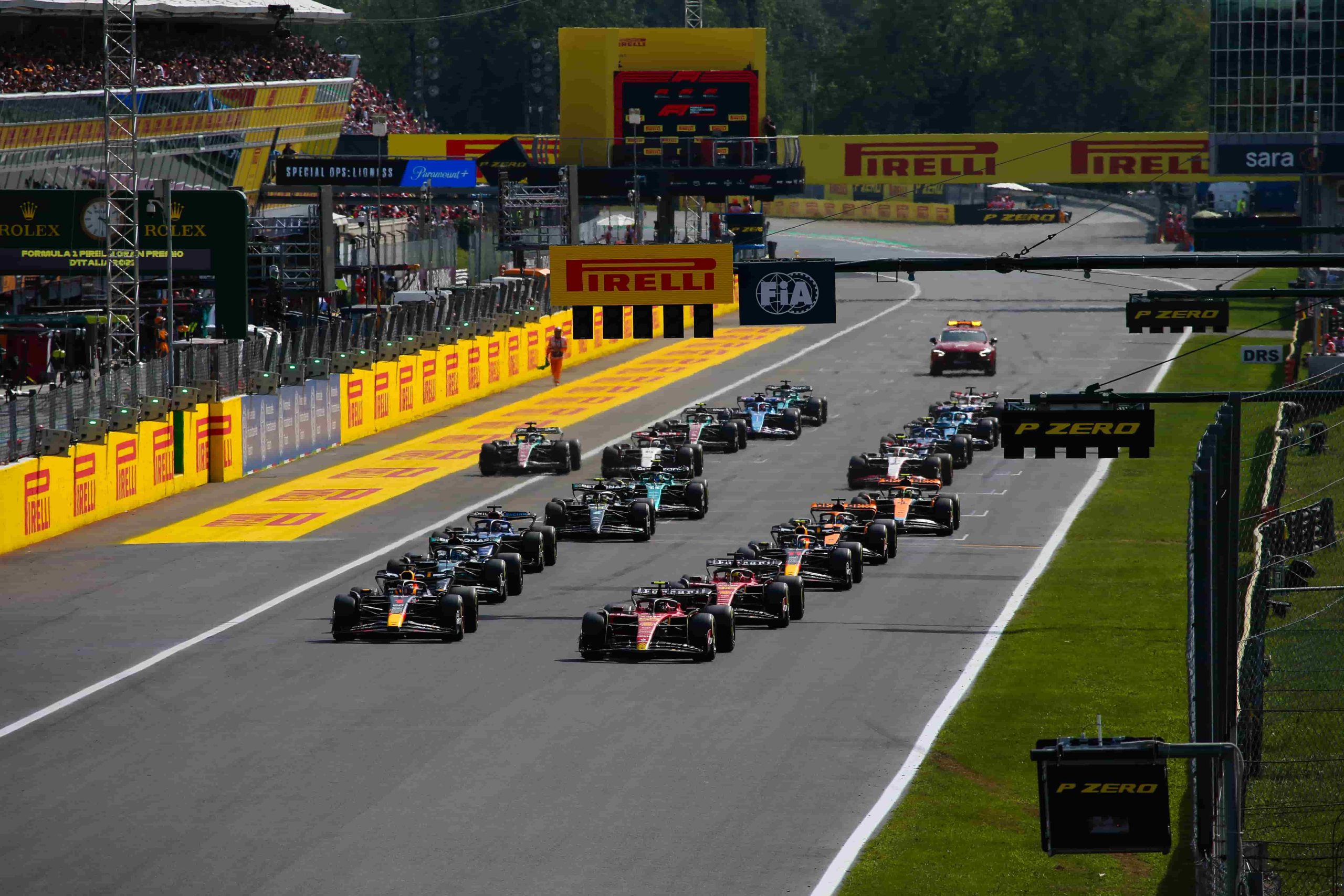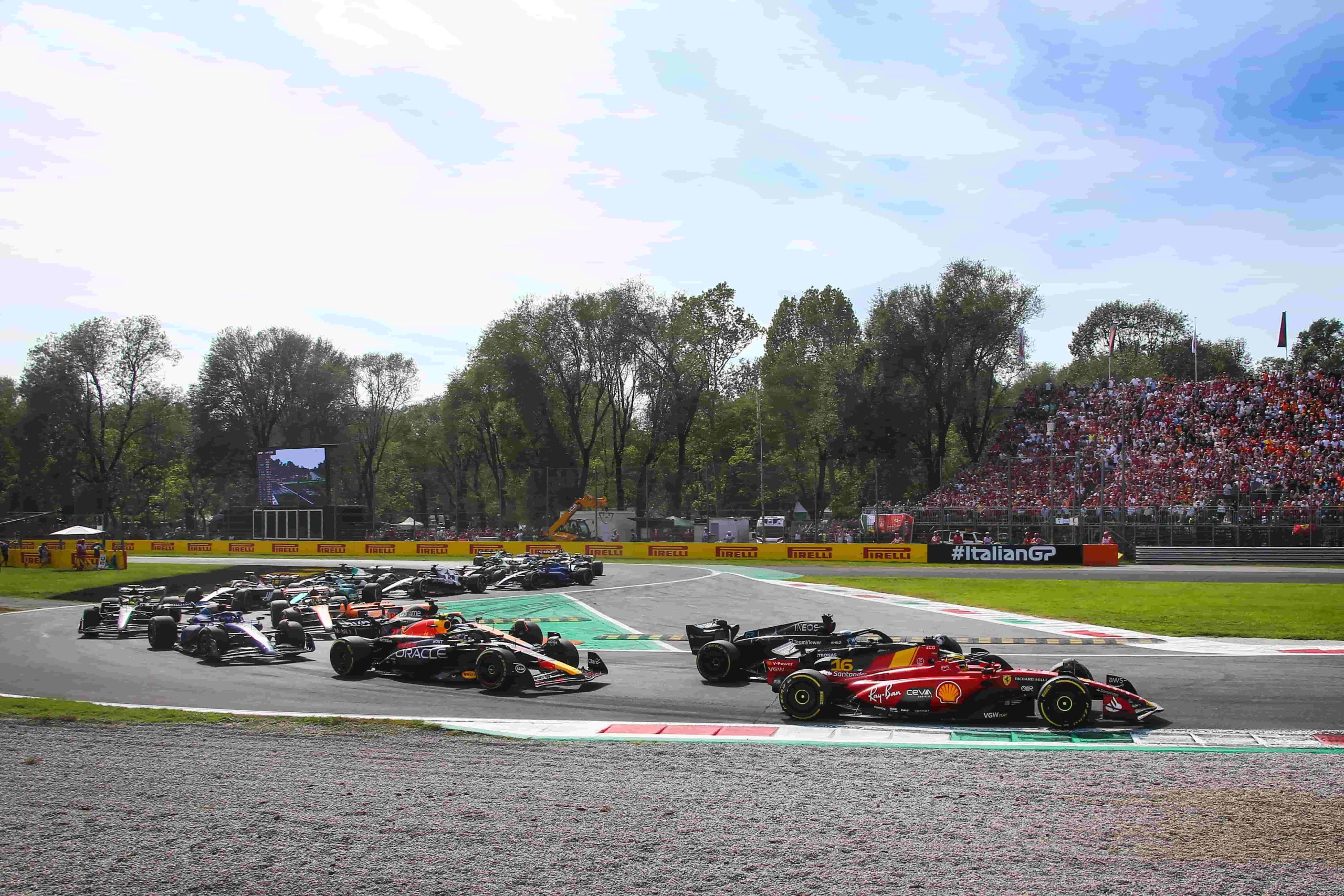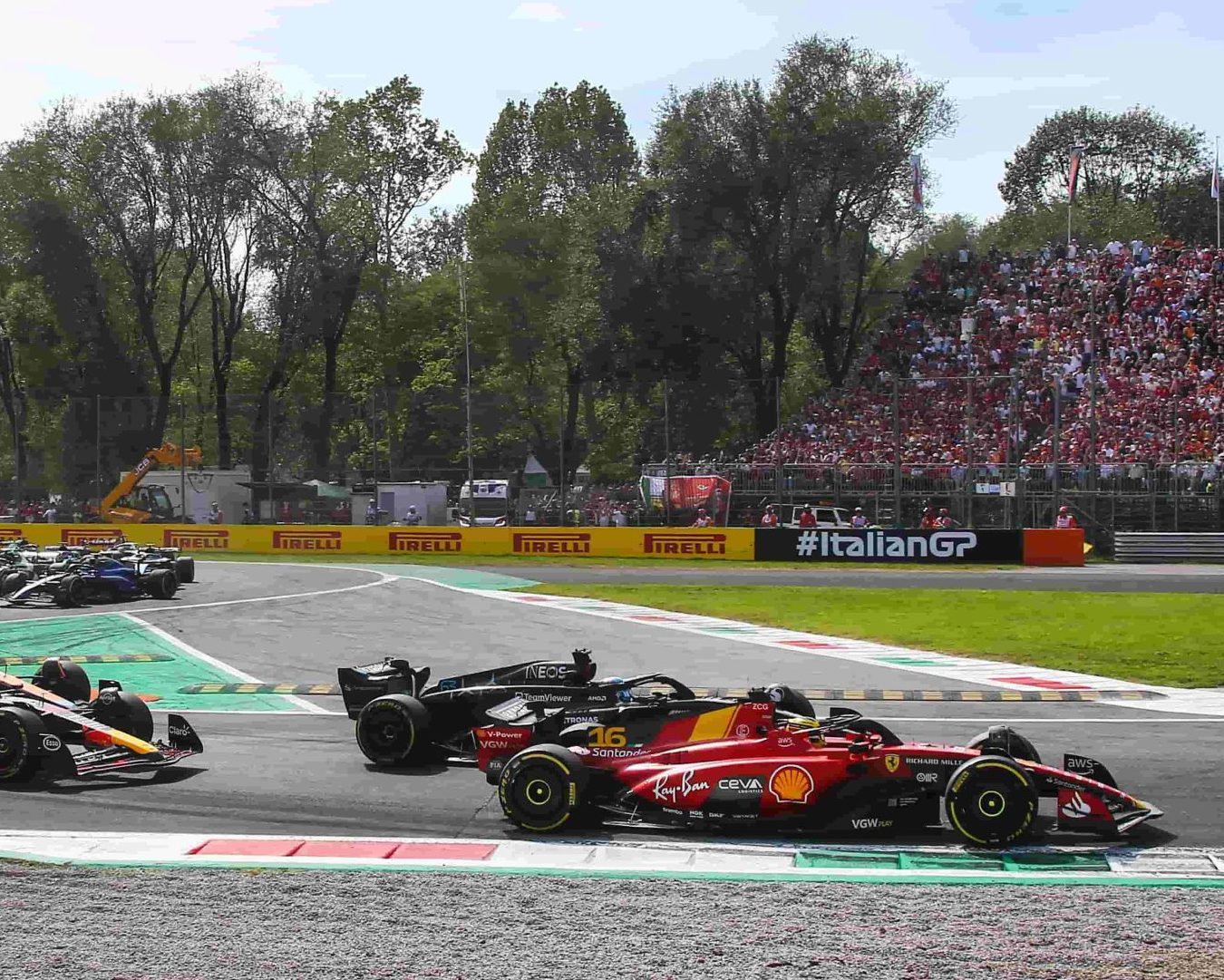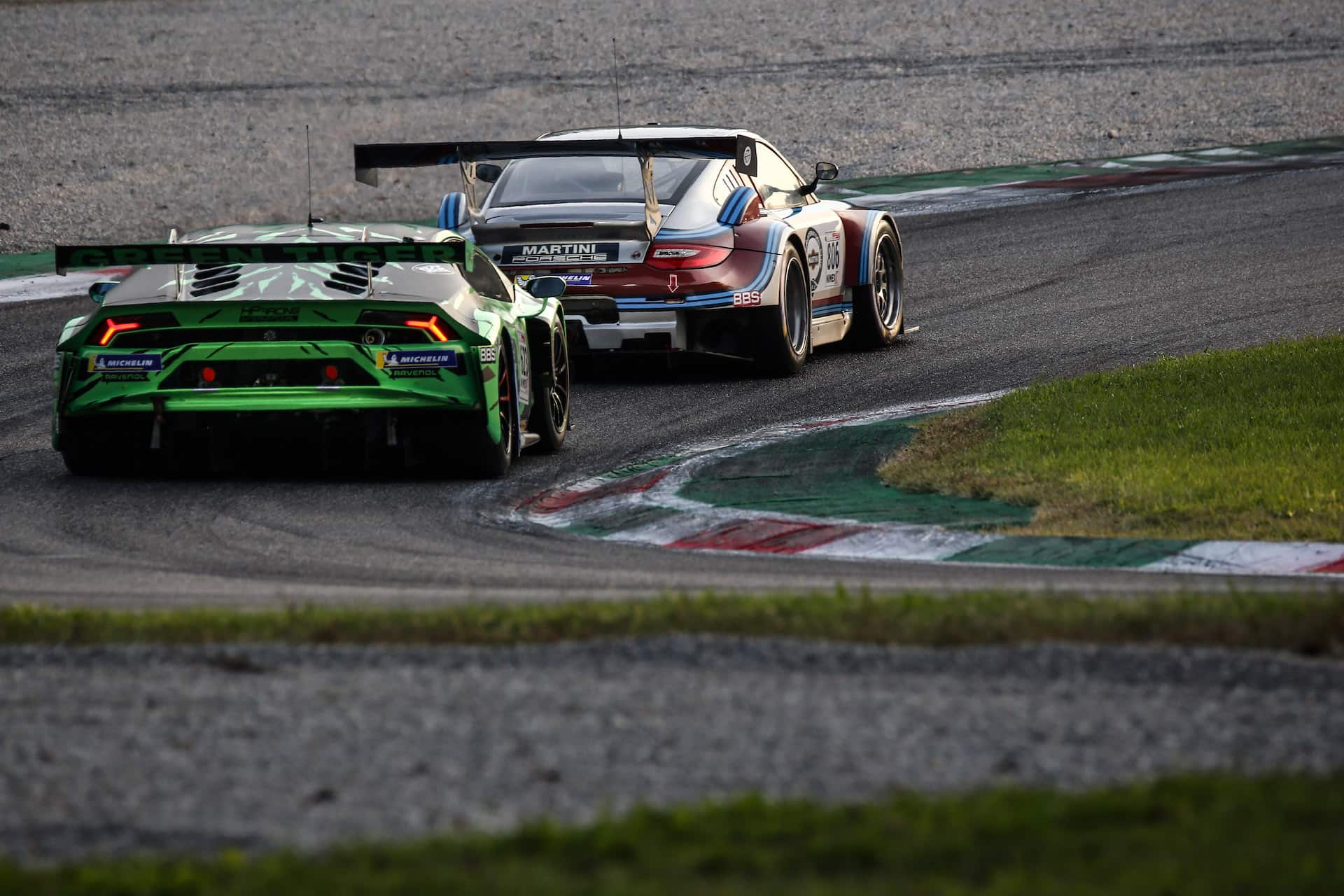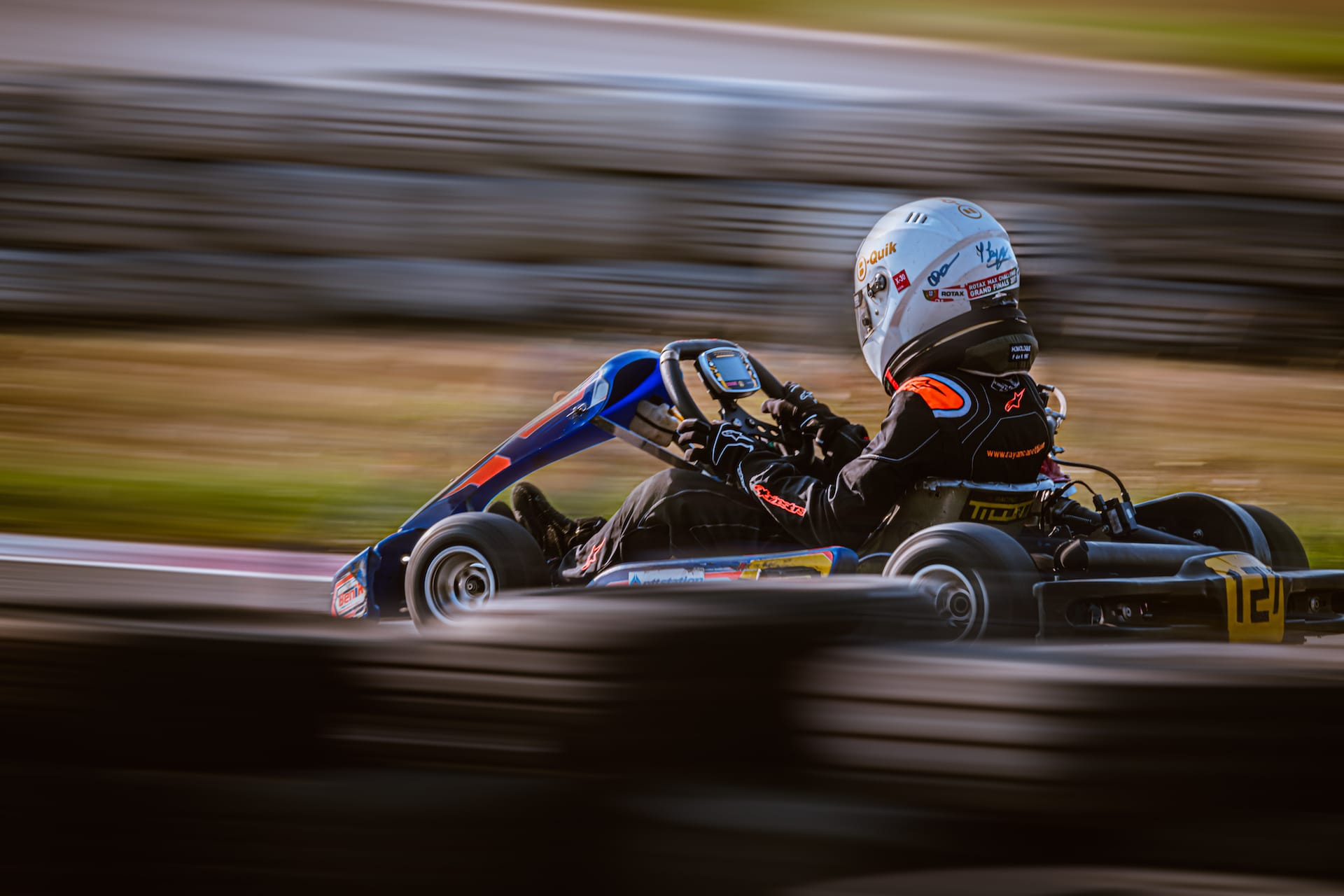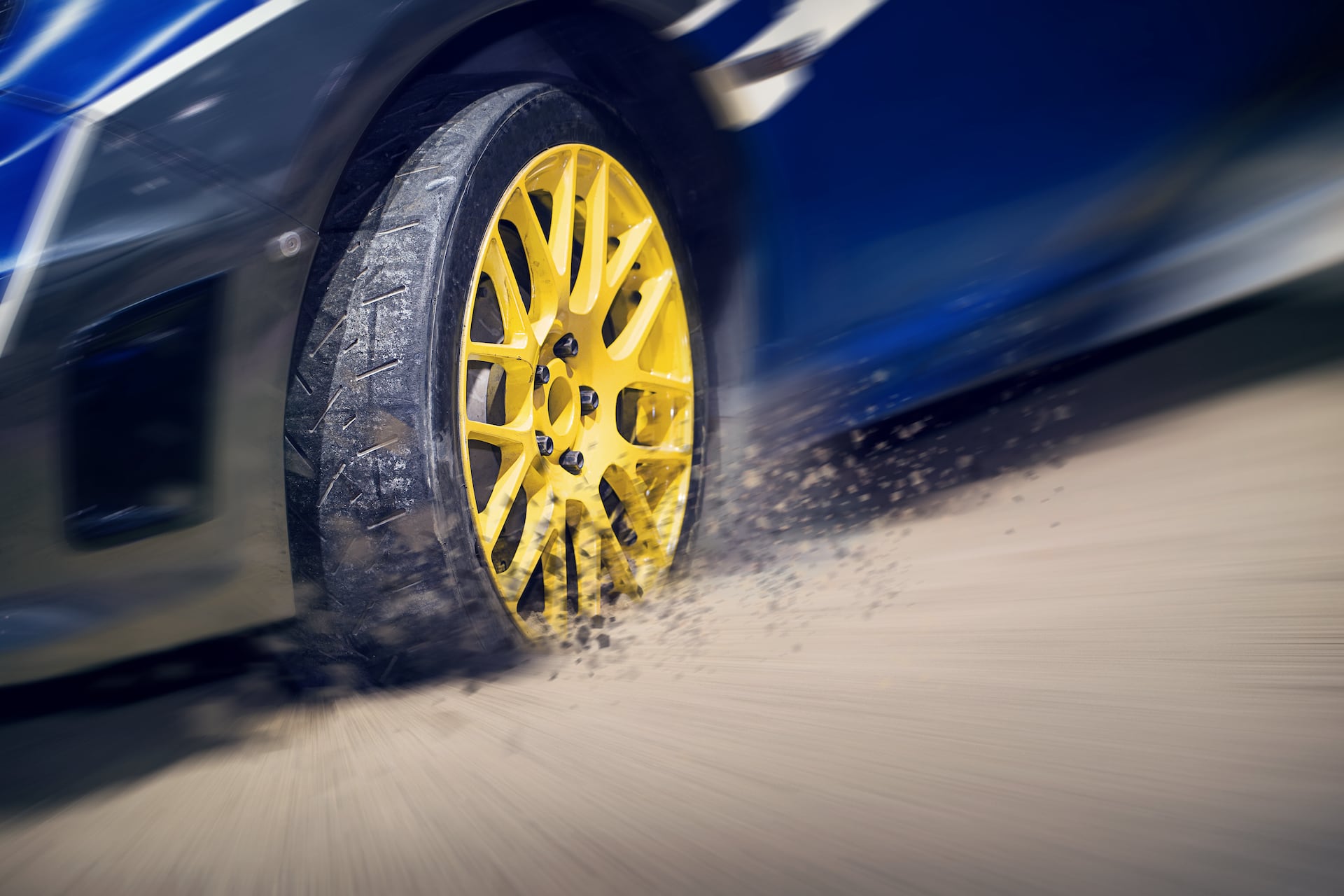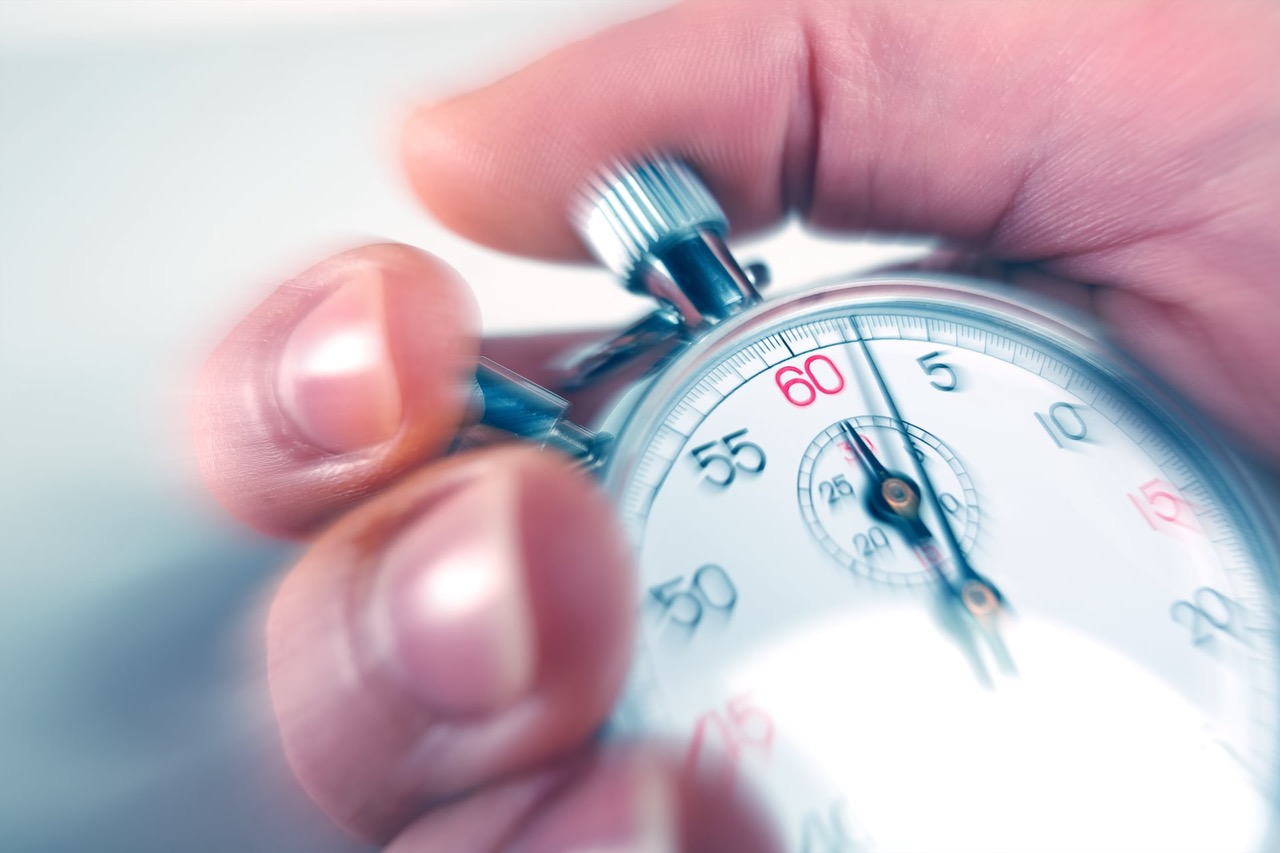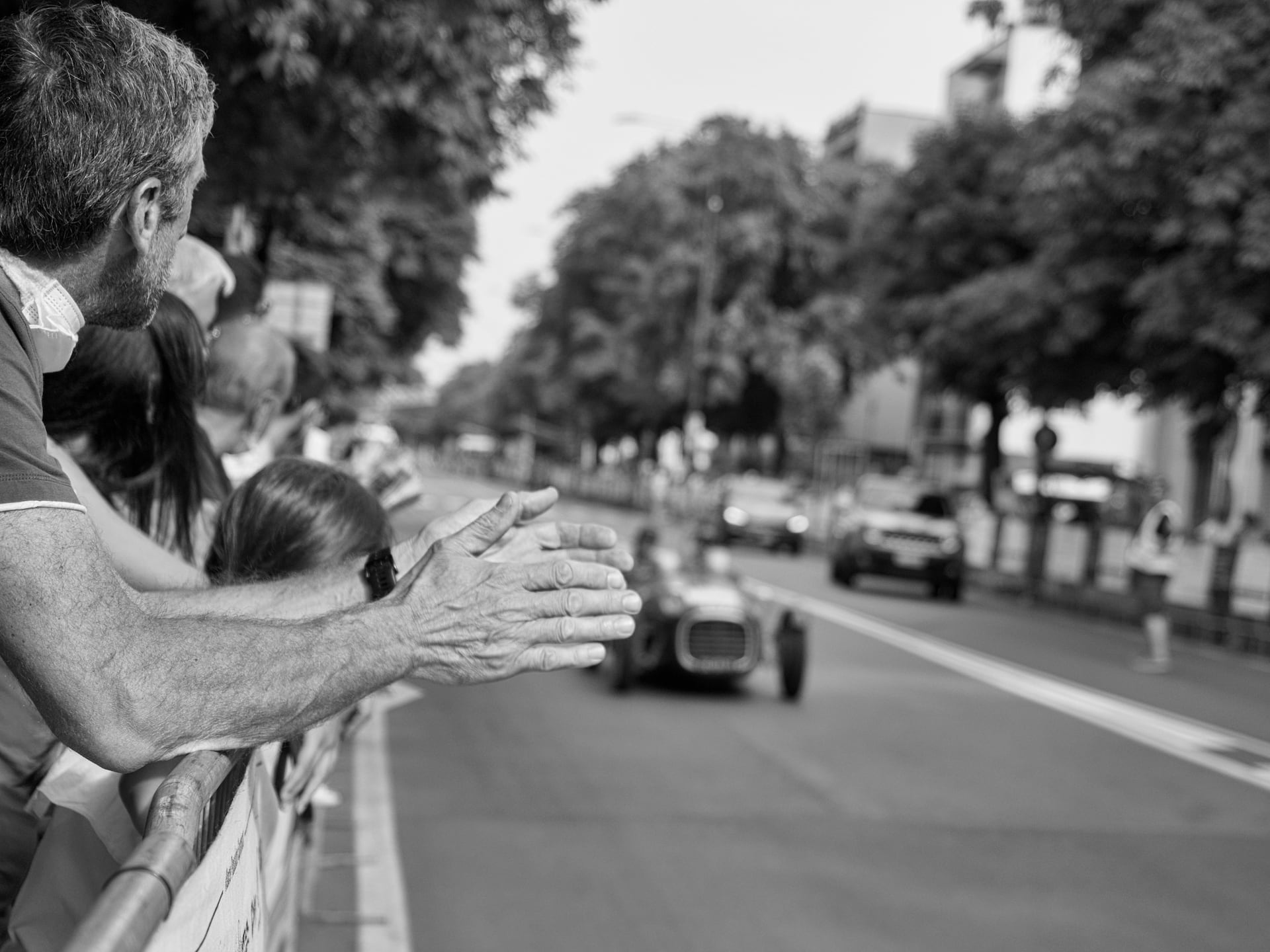Halo system in Formula 1 | A revolution for driver safety
The introduction of the Halo system in Formula 1, protection that has changed the way drivers deal with the risk of serious injury, is proof that safety has always been a key priority in motorsport. Over the years, technology has helped make tremendous progress in this area, and this system represents one of the most significant developments in recent years.
What is the Halo system?
The Halo system is a driver's head protection device that was made mandatory in Formula 1 in 2018. It is a titanium structure surrounding the top of the cockpit designed to protect the driver's head from side or frontal impacts during an accident. The Halo System was developed to meet specific safety requirements, specifically to protect against debris that may enter the head area or impacts with other vehicles. Its minimalist but robust design initially drew much criticism from riders and fans, but its effectiveness was later widely demonstrated.
The benefits of the Halo system in Formula 1
The introduction of the Halo system has had a positively significant impact on the safety of Formula 1 drivers. The device was designed to withstand incredible forces, up to 12 tons, without compromising the driver's visibility or agility while driving. Thanks to this system, it was possible to significantly reduce the risk of serious head injuries by providing unprecedented protection. In addition to physical protection, Halo has also helped change the mindset in motorsport, pushing for continuous improvement in car safety.
Take the course to become a responsible pilot
Romain Grosjean's miraculous rescue
A glaring example of the effectiveness of the Halo system occurred during the Bahrain Grand Prix in 2020. Driver Romain Grosjean, on board his Haas, had a terrible accident; after Daniil Kvyat's AlphaTauri touched his single-seater, the French driver crashed into the barriers, leading the No. 8 VF-20 to break into two parts, with the front one enveloped in a cloud of fire. Although the vehicle was destroyed and on fire, Grosjean managed to save himself thanks to the integrity of the car's survival cell, reinforced by the Halo system. This incident demonstrated without a shadow of a doubt how crucial the system is for safety. The driver was able to exit the vehicle on his own, without head damage, and suffered only minor hand burns and injuries. The incident received worldwide media attention, with many recognizing the critical role of the Halo system in protecting the pilot's life.
Gran Turismo Automobili, the myth hidden behind the GT abbreviation
Max Verstappen and Lewis Hamilton at Monza.
Another example of the effectiveness of the Halo system occurred just during the 2021 Italian Grand Prix. In this race, Max Verstappen and Lewis Hamilton were involved in a spectacular accident, with Verstappen's Red Bull landing on top of Hamilton's Mercedes. Fortunately, both drivers managed to emerge unharmed thanks to the adoption of the Halo system, which prevented the direct impact from damaging Hamilton's head. This incident further confirmed the value of the device in protecting Formula 1 drivers, even in seriously dangerous situations.
An essential device for pilot safety
The Halo system has been a real revolution in the safety of Formula 1 drivers. Since it was introduced, it has saved several lives, protecting drivers during accidents that could have been fatal without it. While initial criticism was about its aesthetics, today it is undeniable that the Halo system is one of the greatest safety achievements in motorsport.
9 interesting facts about the Autodromo Nazionale di Monza and Formula 1
Formula 1 2024, results and rankings of the longest world championship in history
The 2024 Formula 1 World Championship has officially started. In this article, the complete race calendar with all the winners and the constantly updated driver and manufacturer rankings.
The 2024 Formula 1 World Championship will be the longest in history . The calendar of events, in fact, will include 24 grand prix , starting on March 2 in Bahrain and concluding on December 8 in Abu Dhabi . The 2023 Championship should have already reached this record level but the cancellation of the Chinese GP and the cancellation of the Emilia-Romagna GP due to floods had reduced the scheduled races to 22. For 2024, however, things will start to rise again, because both circuits are back in the equation. Here are all the appointments .
The official calendar of the 2024 Formula 1 World Championship and the winners of each Grand Prix
-
Bahrain Grand Prix – Sakhir - 02 March - Verstappen on Red Bull
-
Saudi Arabian Grand Prix – Jeddah - 09 March - Verstappen on Red Bull
-
Australian Grand Prix – Melbourne - 24 March - Sainz on Ferrari
-
Japanese Grand Prix – Suzuka - 07 April - Verstappen on Red Bull
-
Chinese Grand Prix – Shanghai - 21 April - Verstappen on Red Bull
-
Miami Grand Prix – Miami - 05 May - Norris on McLaren
-
Emilia-Romagna Grand Prix – Imola - 19 May - Verstappen on Red Bull
-
Monaco Grand Prix – Monaco - 26 May - Leclerc on Ferrari
-
Canadian Grand Prix – Montreal - 09 June - Verstappen on Red Bull
-
Spanish Grand Prix – Barcelona - 23 June - Verstappen on Red Bull
-
Austrian Grand Prix – Spielberg - 30 June - Russel on Mercedes
-
British Grand Prix – Silverstone - 07 July - Hamilton on Mercedes
-
Hungarian Grand Prix – Budapest - 21 July - Piastri on McLaren
-
Belgian Grand Prix – Spa – July 28 – Hamilton on Mercedes
-
Dutch Grand Prix – Zandvoort - 25 August - Norris on McLaren
-
Italian Grand Prix – Monza – 01 September – Leclerc on Ferrari
-
Azerbaijan Grand Prix – Baku – September 15 – Piastri on McLaren
-
Singapore Grand Prix – Singapore – September 22 – Norris on McLaren
-
United States Grand Prix – Austin - 20 October
-
Mexican Grand Prix – Mexico City - 27 October
-
Brazilian Grand Prix – Sao Paulo - 03 November
-
Las Vegas Grand Prix – Las Vegas - November 23
-
Qatar Grand Prix – Losail - 01 December
-
Abu Dhabi Grand Prix – Yas Marina - 08 December
Drivers ranking
- Verstappen M. - Red Bull - 331 points
- Norris L. - McLaren - 279 points
- Leclerc C. - Ferrari - 245 points
- Piastri O. - McLaren - 237 points
- Sainz C. - Ferrari - 190 points
- Hamilton L. - Mercedes - 174 points
- Russell G. - Mercedes - 155 points
- Perez S. - Red Bull - 144 points
- Alonso F. - Aston Martin - 62 points
- Stroll L. - Aston Martin - 24 points
- Hulkenberg N. - Haas - 24 points
- Tsunoda Y. - Rb - 22 points
- Albon A. - Williams - 12 points
- Ricciardo D. - Rb - 12 points
- Gasly P. - Alpine - 8 points
- Bearman O. - 7 points
- Magnussen K. - Haas - 6 points
- Ocon E. - Alpine - 5 points
- Colapinto F. - Williams - 4 points
- Zhou G. - Stake F1 Team Kick Sauber - 0 points
- Bottas V. - Stake F1 Team Kick Sauber - 0 points
- Sargeant L. - Williams - 0 points
Manufacturers ranking
- McLaren - 516 points
- Red Bull - 475 points
- Ferrari - 441 points
- Mercedes - 329 points
- Aston Martin - 86 points
- Rb - 34 points
- Haas - 31 points
- Williams - 16 points
- Alpine - 13 points
- Stake F1 Team Kick Sauber - 0 points
The drivers of the 2024 Formula 1 World Championship
Even on the drivers' side, the 2024 World Championship marks an unprecedented record, with the collective confirmation by all the teams of the athletes taking to the track in 2023 .
Haas
-
Kevin Magnussen – confirmed
-
Nico Hulkenberg – confirmed
Red Bull
-
Max Verstappen – confirmed
-
Sergio Perez – confirmed
Aston Martin
-
Fernando Alonso – confirmed
-
Lance Stroll – confirmed
McLaren
-
Oscar Piastri – confirmed
-
Lando Norris – confirmed
AlphaTauri
-
Daniel Ricciardo – confirmed
-
Yuki Tsunoda – confirmed
Williams
-
Sargeant
-
Alexander Albon – confirmed
Ferrari
-
Charles Leclerc – confirmed
-
Carlos Sainz – confirmed
Mercedes
-
Lewis Hamilton – confirmed
-
George Russell – confirmed
Alpine
-
Pierre Gasly – confirmed
-
Esteban Ocon – confirmed
Sauber
-
Valtteri Bottas – confirmed
-
Zhou Guanyu – confirmed
Tests of the 2024 Formula 1 World Championship, how did they go?
The 2024 Formula 1 World Championship winter testing was held in a single event in Sakhir, Bahrain, from 21 to 23 February. Here's how they went and what were the results recorded on the track by the new single-seaters, presented just a few days ago. Every year, the lead-up to a new Formula 1 season is marked by two fundamental stages: the presentations of the new single-seaters and the winter tests . In particular, the latter represent a sort of dress rehearsal for the Formula 1 World Championship , the only official opportunity for the ten teams to refine the feeling between car and drivers before the start of the season. It is normal, therefore, that the eyes of insiders and enthusiasts are focused precisely on the tests, which heat up the atmosphere and increase curiosity for the start of the new championship.
The 2024 Formula 1 winter testing schedule
This year too, however, four-wheel fans, as already happened in 2023, had to settle for just one appointment for the Formula 1 winter tests, instead of the two scheduled for the 2022 season. The 2024 Formula 1 World Championship , in fact, is already upon us (it will start on March 2) and will be the longest in history. There was therefore little time to test the new single-seaters, given that the presentations ended in mid-February . For this reason, the only winter tests for Formula 1 2024 were held from 21 to 23 February in Bahrain , precisely on the Sakhir track, the same one that will host the first Grand Prix of the season.
What to give to a Formula 1 fan?
All test results from the 2024 Formula 1 World Championship
Formula 1 fans know it well: the results of winter tests should always be taken with a pinch of salt , because they can be misleading. In fact, there are many possibilities for teams to "bluff" to maintain an aura of mystery about their strengths and especially their weaknesses until the moment of the first Grand Prix. However, this does not mean that the tests cannot provide some useful information for imagining the Championship to come . From this point of view it is therefore legitimate to ask what the laps of the track done by the single-seaters in Bahrain revealed. The final time classification reveals a Ferrari capable of taking home the virtual front row: first Sainz , who stopped the clock of his fastest lap under a minute and a half (1'29''921), second Lecrerc , who stopped just above (1'30''322). Followed by Russell on Mercedes (1'30''368), Zhou on Sauber (1'30''647) and Perez and Verstappen on Red Bull (with 1'30''679 and 1'30''755 respectively). In the three days of Sakhir there were different simulations both on the "flying lap" and on the race pace. Only the start of the season will reveal who has come closest to 3-time World Champion Max Verstappen and Red Bull. Formula 1 - Italian Grand Prix 2024 The original contents of this article are produced by an external service without any involvement of the press office of the Autodromo Nazionale Monza.
Presentations of the Formula 1 single-seaters, the complete calendar for 2024
In the first half of February, the teams competing in the 2024 Formula 1 World Championship will present the new single-seaters. A crucial step ahead of the new season, which attracts all Formula 1 fans. The presentations of the single-seaters and the winter tests in preparation for the new season are the stages of the approach to the 2024 Formula 1 World Championship . The first official outing of the cars is scheduled for February 21st to 23rd in Sakhir, Bahrain. By that date, therefore, all the teams must have presented their new race cars. Launch events always attract a lot of attention and exert a particular fascination on enthusiasts and professionals. It is from that moment, in fact, that one can begin to fantasize about the new season, venturing into more or less reliable predictions.
F1 World Championship 2024, the calendar of single-seater presentations
Almost all the teams that will participate in the 2024 Formula 1 World Championship have communicated the date of the presentation of the new single-seaters and all the appointments will be concentrated in the first half of February . Here is the calendar of events (the name of the single-seater in brackets):
- Haas F1 (VF-24) – February 2
- Williams (FW46) - February 5
- Sauber (C44) - 5 February
- Alpine (A524) - 7 February
- Visa Cash App Racing Bulls – February 9th
- Aston Martin Racing (AMR24) - 12 February
- Ferrari - 13 February
- Mercedes (W15) - February 14
- McLaren (MCL38) - 14 February
- Red Bull Racing (RB20) - February 15
The 2024 Formula 1 single-seaters
Below is a brief summary of the main features of each car that will take part in the 2024 Formula 1 World Championship.
Haas - VF-24
Even for 2024, Haas has chosen a digital-only presentation of the new single-seater, releasing renders of the new car's livery from which little can be hypothesized regarding any possible technical innovations. The photos, however, were then followed by the first real images, coming from the Silverstone circuit, where Haas raced its first filming day. Overall, there is a slimming of the sides , also made possible by moving the radiators to a central position . On the mechanical front, the suspensions with push rod model on the front and pull rod on the rear seem confirmed. 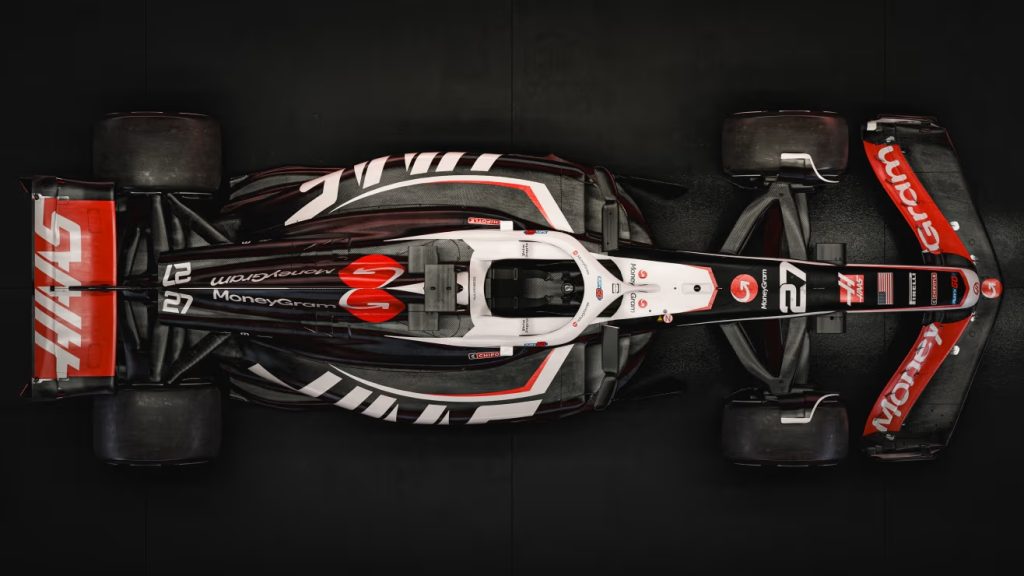
Williams - FW46
The launch of the new Williams single-seater took place in New York, at the iconic Puma flagship store. However, it was a partial presentation. In fact, only the livery of the FW46 has been revealed , while maximum confidentiality has been maintained on the technical innovations, which will only be made known during the first official tests. The aesthetics of the new car that will be driven by Albon and Sargeant do not differ much from the 2023 version. The navy blue color remains prevalent, with variations in lighter and darker shades. Furthermore, on the nose there is a double red and white stripe , a tribute to the glorious past of the team. 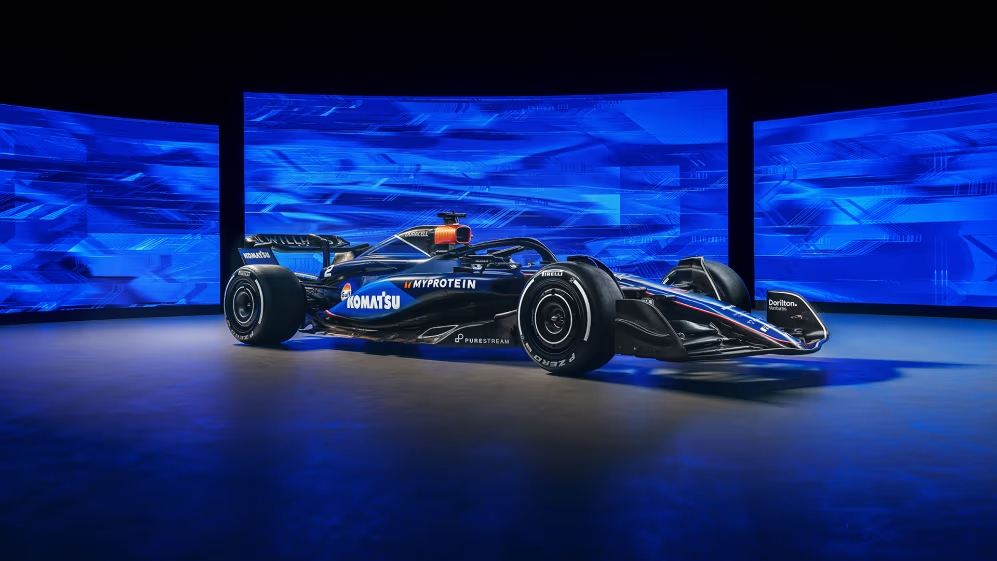
Sauber - C44
At Sauber , however, a choice opposite to that of Williams was made, revolutionising the colours of the livery . Goodbye to the red-white references, a sign of the collaboration with Alfa Romeo, and space instead for a powerful combination of black and acid green . As for the technical innovations, the most evident are the new pull-rod front suspension , which replaced the previous push-rod system, and an aerodynamic package with very aggressive lines . 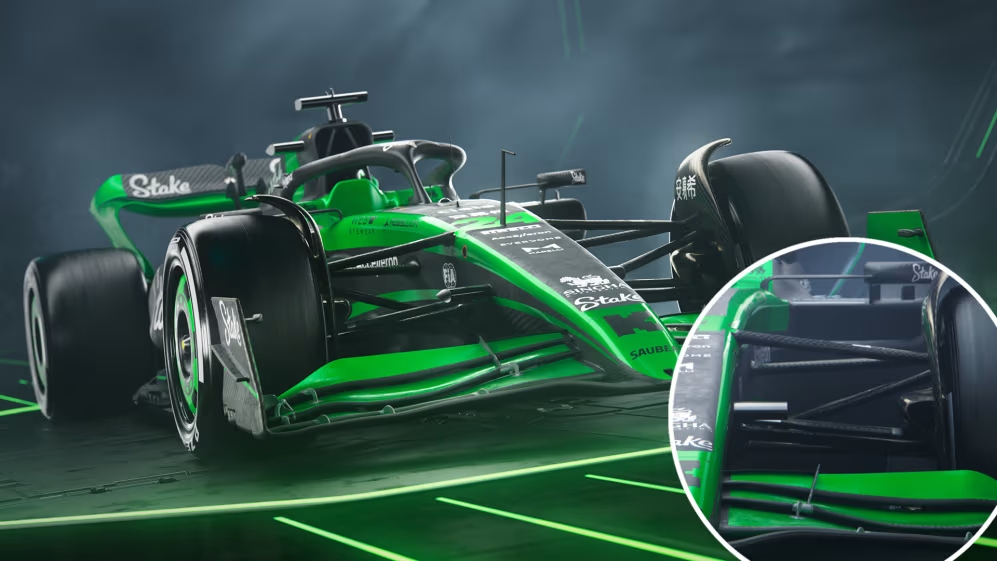
Alpine - A524
Let's now move to Enstone, where the veils covering the new Alpine single-seater have fallen, revealing what appears to be a real revolution. In fact, there are many new features that characterize the A524 . A lot of work was done on the frame , which came out completely redesigned as well as lighter . Furthermore, a new rear suspension system was introduced and the front suspension system was optimized (in both cases, however, the push-rod model was confirmed). Finally, it is also worth mentioning the important changes that have affected the air cooling system . 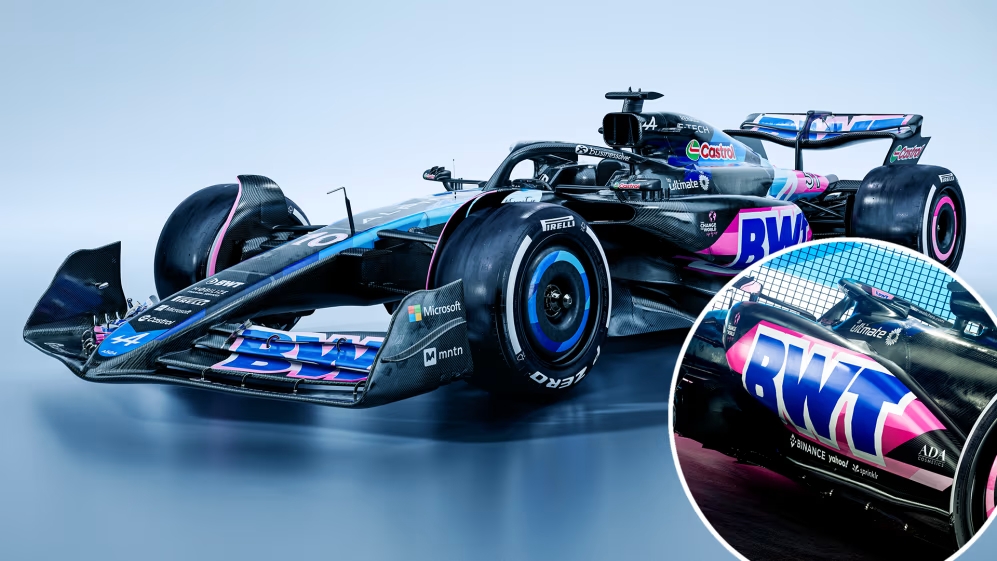
Visa CashApp Racing Bulls – VCARB 01
Visa CashApp Racing Bulls , the new name of the former AlphaTauri team, has instead chosen Las Vegas to unveil the VCARB 01. Even in this case, however, only renderings were shown and not the real car. The new single-seater features a livery that takes you back in time, because its colors and style recall that used by the latest Toro Rosso cars (2019): dominant blue, broken up by two white stripes with red edges. From a mechanical point of view, however, the clues that can be gleaned from the images seem to indicate a strong similarity with the Red Bull RB19. 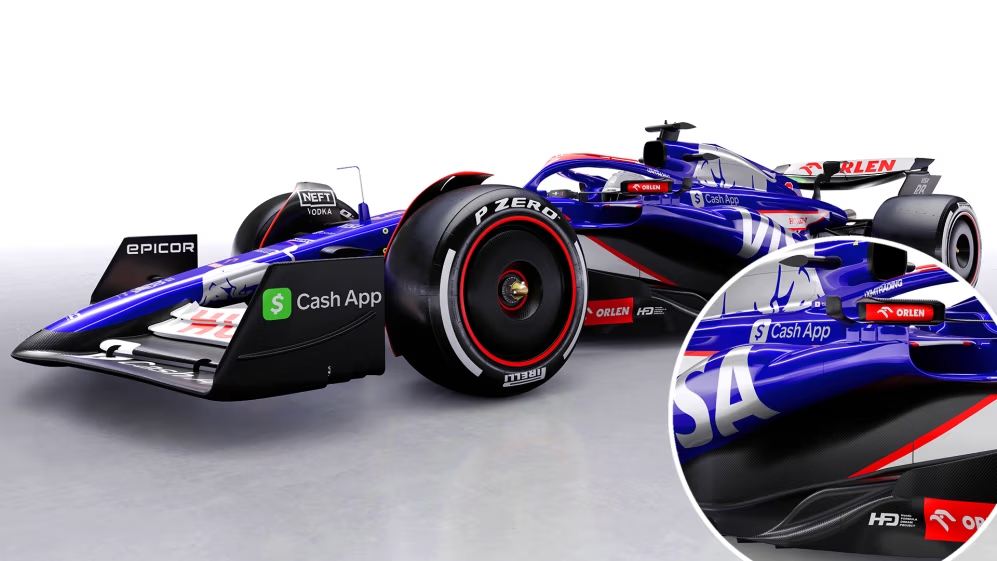
Aston Martin Racing - AMR24
The AMR24 , the car with which Aston Martin will line up at the starting line of the 2024 season, features significant evolutions compared to the 2023 single-seater, but no radical upheavals. The livery is in absolute continuity with last year , with the exception of a few details. More interesting, however, are the technical variations. What stands out above all is the shorter muzzle and the smaller air inlets . Furthermore, the rear suspension switches from the pull rod model to the push rod one , realigning itself with the front ones. Finally, it is worth highlighting the overall slimming of the bodywork .
Ferrari - SF-22
There are also many new features at Ferrari . The new SF-24 , shown only on video in the presentation event and then seen live during the shakedown held in Fiorano, already appears evolved in the livery , with the traditional white and yellow stripes that gain more space, starting from the nose, and with the wheel covers turning red. As regards the mechanics, the distinction between the front (push-rod) and rear (pull-rod) suspensions remains but the installation points of the arms on the frame change. Interesting elements are also the lengthening of the frame itself, the moving back of the gearbox and engine and the reshaping of the sides . 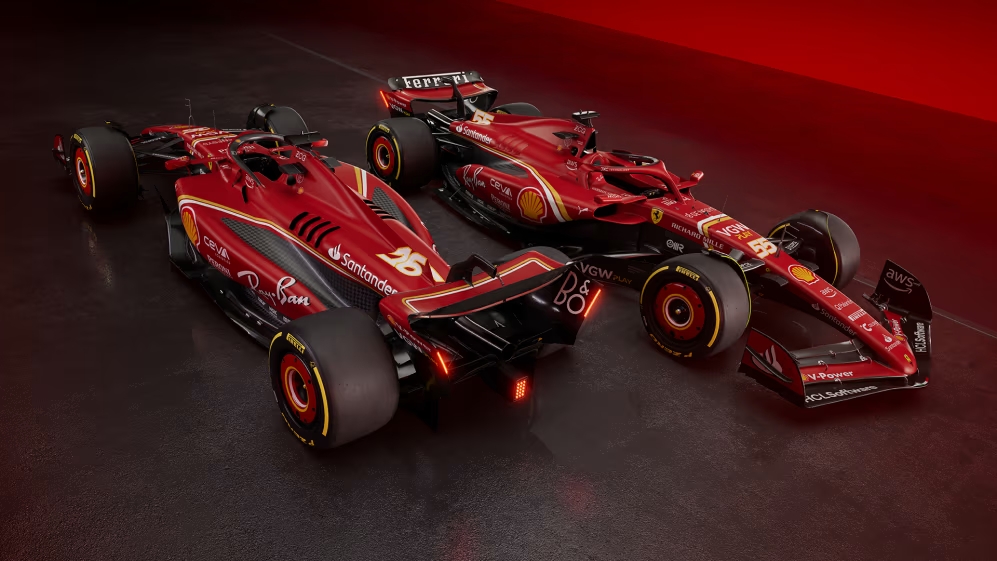
Mercedes - W15
At Mercedes, a truly revolutionary approach has been chosen. The W15 offers a radical renewal compared to the 2023 single-seater, both in form and substance. First of all, silver dominates the livery again , a tribute to the 90 years of the team. In terms of structure and mechanics, a very important change concerns the height from the ground , which decreases again but without reaching the record limits of 2022, which we had caused some problems. The chassis , nose and gearbox are also new, and the cockpit is positioned further back in response to the needs expressed by Hamilton. 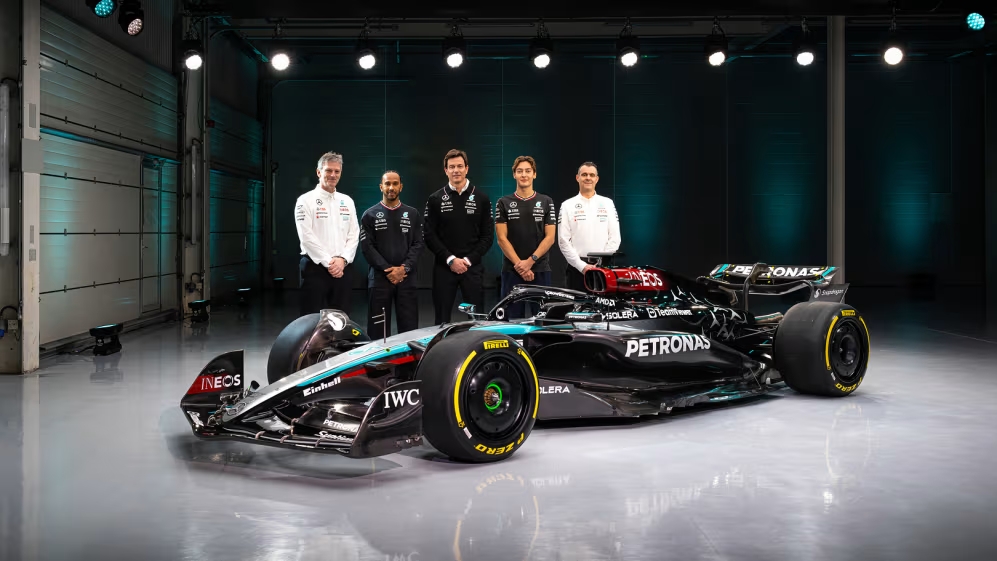
McLaren - MCL38
Among the latest single-seaters to be presented, the McLaren MCL38 showed itself to the world of enthusiasts with the classic livery dominated by orange , combined with the carbon black of the unpainted parts. From a structural and mechanical point of view, the English car manufacturer seems to have worked a lot on details and not on major upheavals. The nose attaches to the front wing on the second profile, the bellies are quite pronounced and go down drastically at the rear, on the bonnet there are two "pipes" which convey the hot air onto the rear wing. Finally, the distinction between rear (push rod) and front (pull rod) suspensions has been confirmed. 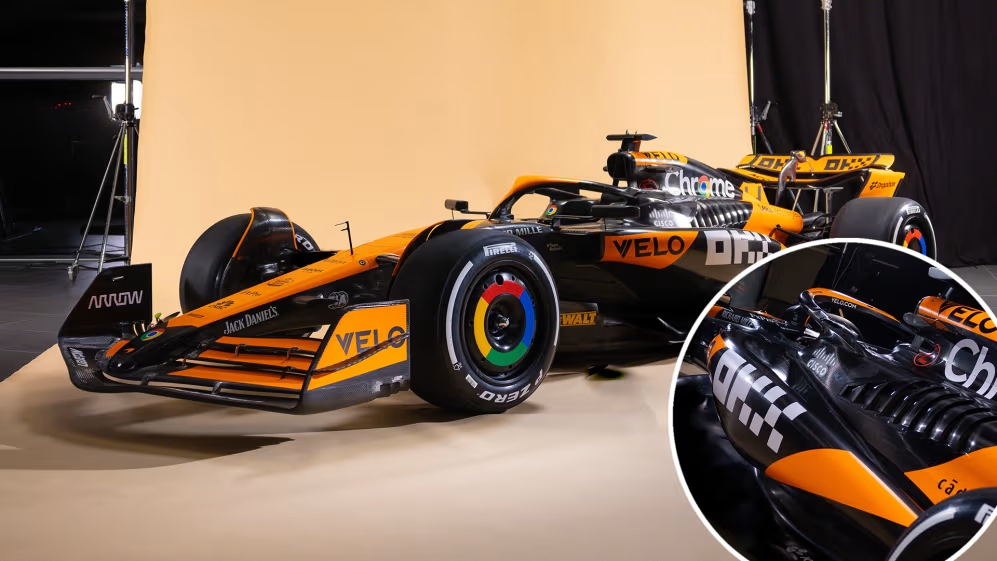
Red Bull Racing - RB20
The RB20, with which Red Bull will try to confirm its dominance of Formula 1 next season, took some time to unveil but did not disappoint expectations. Regardless of the motto "you don't change a team that wins", the Keynes team has revolutionized the single-seater with which it won the last championship. What remains practically identical is only the coloring. Among the most impactful innovations are the elongated snout , the completely redesigned entrance to the bellies and the overall shapes which appear very extreme . The suspension systems have been confirmed, but with changes to the kinematics. 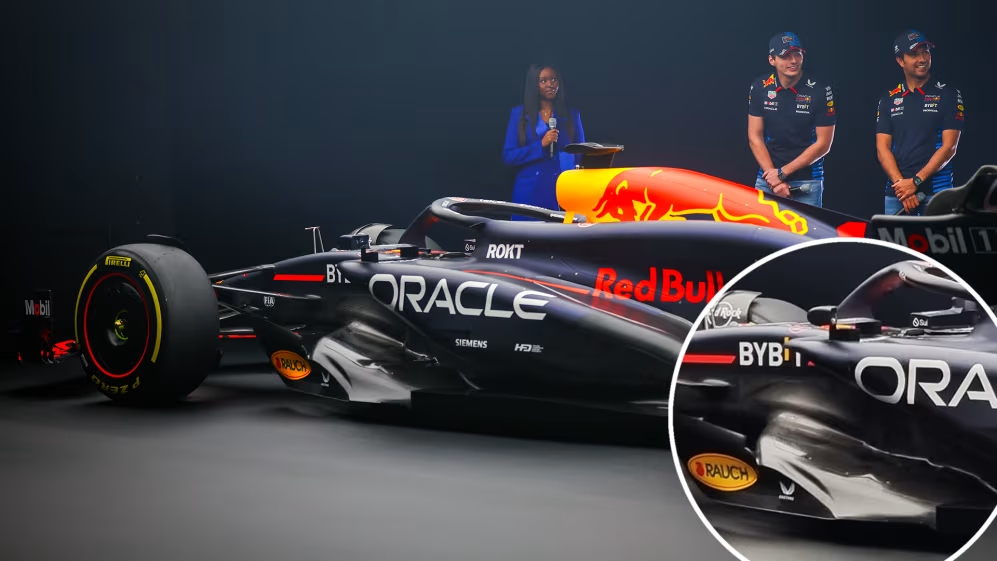
Formula 1 - Italian Grand Prix 2022
The original contents of this article are produced by an external service without any involvement of the press office of the Autodromo Nazionale Monza.
Formula 1 World Championship 2023, the final rankings: Verstappen and Red Bull still champions
The 2023 Formula 1 World Championship ended once again in the name of Verstappen and his Red Bull. The Belgian driver became world champion for the third consecutive time. his was a triumphal and unstoppable march, which no one was ever able to question during the course of the season. Verstappen has in fact collected 19 victories out of 22 grands prix contested, for a total of 575 points. With him, Red Bull also flew, winner of the team classification, ahead of Mercedes (second) and Ferrari (third)
Read also: Motorsport 2023, all the events of the season
The 2023 Formula 1 race calendar
The 2023 edition of the Formula 1 World Championship features 23 Grand Prix, of which only 22 were actually held, given the cancellation of the Emilia Romagna GP due to the flood. Losail (Qatar) and Las Vegas have entered the calendar (bringing the GPs in the United States to 3), while Le Castellet (France) has left the scene. the start was on 5 March with the Bahrain Grand Prix at the Sakhir circuit. Instead, it will close on November 26 in Abu Dhabi , on the post of Yas Island. Below is the complete program with the winners of the races already held.
- 5 MAR – Bahrain Grand Prix – Sakhir (Bahrain) - Verstappen on Red Bull
- 19 MAR – Saudi Arabian Grand Prix – Jeddah (Saudi Arabia) - Perez on Red Bull
- 2 APR – Australian Grand Prix – Melbourne (Australia) – Verstappen on Red Bull
- 30 APR - Azerbaijan Grand Prix – Baku (Azerbaijan) - Perez on Red Bull
- 7 MAY – Miami Grand Prix – Miami (Florida - USA) - Verstappen on Red Bull
- 21 MAY – Made in Italy and Emilia-Romagna Grand Prix – Imola (Italy) - Canceled
- 28 MAY – Monaco Grand Prix - Monte Carlo (Monaco) - Verstappen on Red Bull
- 4 JUN – Spanish Grand Prix – Barcelona (Spain) – Verstappen on Red Bull
- 18 JUN – Canadian Grand Prix – Montreal (Canada) - Verstappen on Red Bull
- 2 JUL – Austrian Grand Prix – Spielberg (Austria) - Verstappen on Red Bull
- 9 JULY – British Grand Prix – Silverstone (England) – Verstappen on Red Bull
- 23 JUL – Hungarian Grand Prix – Budapest (Hungary) – Verstappen on Red Bull
- 30 JULY – Belgian Grand Prix - Spa-Francorchamps (Belgium) – Verstappen on Red Bull
- 27 AUG – Dutch Grand Prix – Zandvoort (Netherlands) – Verstappen on Red Bull
- 3 SEP – Italian Grand Prix – Monza (Italy) – Verstappen on Red Bull
- 17 SEP – Singapore Grand Prix - Marina Bay Street Circuit (Singapore) - Sainz on Ferrari
- 24 SEP – Japanese Grand Prix – Suzuka (Japan) – Verstappen on Red Bull
- 8 OCT – Qatar Grand Prix – Losail (Qatar) - Verstappen on Red Bull
- 22 OCT – United States Grand Prix – Austin (Texas - USA) – Verstappen on Red Bull
- 29 OCT – Mexico City Grand Prix - Mexico City (Mexico) - Verstappen on Red Bull
- 5 NOV – Sao Paulo Grand Prix - Sao Paulo (Brazil) – Verstappen on Red Bull
- 18 NOV – Las Vegas Grand Prix – Las Vegas (California – USA) - Verstappen on Red Bull
- 26 NOV – Abu Dhabi Grand Prix - Yas Island (Abu Dhabi) - Verstappen on Red Bull
Read also: The 2023 calendar of single-seater presentations and official tests
Formula 1 World Championship 2023 results and standings
Below are the updated standings for the drivers' and constructors' world championships.
The 2023 Formula 1 drivers ranking - Updated to 22 October 2023 (USA GP)
- Verstappen M. - Red Bull - 575 (Champion)
- Perez S. - Red Bull - 285
- Hamilton L. - Mercedes - 234
- Alonso F. - Aston Martin - 206
- Leclerc C. - Ferrari - 206
- Norris L. - McLaren - 205
- Sainz C. - Ferrari - 200
- Russell G. - Mercedes - 175
- Plates O. - McLaren - 97
- Stroll L. - Aston Martin - 74
- Gasly P. - Alpine - 62
- Ocon E. - Alpine - 58
- Albon A. - Williams - 27
- Tsunoda Y. - Alpha Tauri - 17
- Bottas V. - Alfa Romeo Racing - 10
- Hulkenberg N. - Haas - 9
- Ricciardo D. - Alphatauri - 6
- Zhou G. - Alfa Romeo Racing - 6
- Magnussen K. - Haas - 3
- Lawson L. - Alphatauri - 2
- Sargeant L. - Williams - 1
- De Vries N. - Alphatauri - 0
The 2023 Formula 1 constructors' ranking - Updated to 22 October 2023 (USA GP)
- Red Bull - 860
- Mercedes - 409
- Ferrari - 406
- McLaren - 302
- Aston Martin - 280
- Alpine - 120
- Williams - 28
- Alphatauri - 25
- Alfa Romeo Racing - 16
- Haas - 12
The drivers and teams competing for the F1 world title in 2023
While the 2023 Formula 1 World Championship calendar features few but important changes, there is also some movement regarding the line-ups of drivers hired by the teams. Compared to 2022, the teams competing for the titles are the same (always 10), while there are different changes at the wheel of the single-seaters, with numerous changes of "shirt" behind the wheel. Below are all the complete teams. Haas
- Kevin Magnussen - Confirmed
- Nico Hulkenberg - new
Red Bull
- Max Verstappen - confirmed
- Sergio Perez - confirmed
Aston Martin
- Fernando Alonso - new
- Lance Stroll - confirmed
McLaren
- Oscar Piastri - new
- Lando Norris - confirmed
AlphaTauri
- Nyck de Vries - new
- Yuki Tsunoda - confirmed
Williams
- Logan Sargeant - new
- Alexander Albon – confirmed
Ferrari
- Charles Leclerc - confirmed
- Carlos Sainz - confirmed
Mercedes
- Lewis Hamilton - confirmed
- George Russell - confirmed
Alpine
- Pierre Gasly - new
- Esteban Ocon - confirmed
Alfa Romeo
- Valtteri Bottas - confirmed
- Guanyu Zhou – confirmed
Find out more about the 2023 Italian Grand Prix
Motorsport 2023 season, all the most important appointments in the motor world
The 2023 Motorsport and motoring season is full of appointments and news, starting with Formula 1, which is getting longer and renewed. But the other competitions are not far behind, from Formula E to the World Endurance Championship up to the GT World Challenge Europe. Rich calendars that promise great emotions to all four-wheel enthusiasts.
Formula 1 2023, 24 races scheduled and departure on March 5th
The Formula 1 World Championship will kick off on March 5, 2023, in Bahrain, and will be the longest in history, with 24 races , one more than last year. The closure, however, is scheduled for November 26 in Abu Dhabi. Two Grands Prix absent in 2022 are back on the list: Las Vegas and Qatar. On the other hand, the French Grand Prix leaves the list of competitions. In Italy, however, both events have been confirmed: Imola for the Made in Italy Grand Prix and Monza for the Italian Grand Prix (3 September 2023).
Find out more about the 2023 Formula 1 Italian Grand Prix
Formula 2 2023, 14 grands prix with two stages in Italy
The 2023 Formula 2 season will also feature a double Italian stage, with Monza and Imola again on the track. The championship, made up of 14 stages, will always start on March 5 from Bahrain and will end on November 26 in the United Arab Emirates. Here is the complete calendar:
- March 3-5: Bahrain (Sakhir)
- March 17-19: Saudi Arabia (Jeddah)
- March 31-April 2: Australia (Melbourne)
- April 28-30: Azerbaijan (Baku)
- May 19-21: Italy (Imola)
- 25-28 May: Monaco (Monte Carlo)
- June 2-4: Spain (Montmeló)
- June 30-July 2: Austria (Spielberg)
- July 7-9: Great Britain (Silverstone)
- 21-23 July: Hungary (Hungaroring)
- 28-30 July: Belgium (Spa-Francorchamps)
- 25-27 August: Netherlands (Zandvoort)
- 1-3 September: Italy (Monza)
- November 24-26: United Arab Emirates (Yas Marina)
Formula 3 2023, 10 grand prix in 6 months
The 2023 Formula 3 season, however, sees the total number of events increase from 9 to 10, with the entry of Australia and Monaco and the exit of Zandvoort. The departure is always scheduled for March 5 from Bahrain, while the closing will be in Monza on September 3. Here is the list of all the stages:
- March 3-5: Bahrain (Sakhir)
- March 31-April 2: Australia (Melbourne)
- May 19-21: Italy (Imola)
- 25-28 May: Monaco (Monte Carlo)
- June 2-4: Spain (Montmeló)
- June 30-July 2: Austria (Spielberg)
- July 7-9: Great Britain (Silverstone)
- 21-23 July: Hungary (Hungaroring)
- 28-30 July: Belgium (Spa-Francorchamps)
- 1-3 September: Italy (Monza)
Formula E 2023, ninth season for the electric car championship
The 2023 season will be the ninth for Formula E, the championship dedicated to electric cars, which will touch 11 cities for a total of 16 Grand Prix. It starts on January 14 from Mexico City and ends on July 30 in London. Below is the full calendar of Formula E rounds:
- Round 1: Mexico City - 14 January 2023
- Round 2: Diriyah - 27 January 2023
- Round 3: Diriyah - 28 January 2023
- Round 4: Hyderabad - 11 February 2023
- Round 5: Cape Town - 25 February 2023
- Round 6: Sao Paulo - 25 March 2023
- Round 7: Berlin - 22 April 2023
- Round 8: Berlin - 23 April 2023
- Round 9: Monaco - 6 May 2023
- Round 10: Jakarta - 3 June 2023
- Round 11: Jakarta - 4 June 2023
- Round 12: Portland - June 24, 2023
- Round 13: Rome - 15 July 2023
- Round 14: Rome - 16 July 2023
- Round 15: London - 29 July 2023
- Round 16: London - 30 July 2023
World Endurance Championship (WEC) 2023, 6 unmissable stages to celebrate the tenth season
The 2023 calendar of the FIA World Endurance Championship WEC , the World Championship of endurance racing, has grown by one stage compared to the previous year. Seven appointments in nine months, from the USA to Bahrain. Here is the complete WEC calendar :
- March 17: United States - 1000 Miles of Sebring
- April 16: Portugal - 6 Hours of Portimao
- April 29: Belgium - 6 Hours of Spa-Francorchamps
- 10-11 June: France - 24 Hours of Le Mans
- July 9: Italy - 6 Hours of Monza
- September 10: Japan - 6 Hours of Fuji
- November 4: Bahrain - Bahrain 8 Hours
GT World Challenge Europe 2023, 10 Grand Prix for Gran Turismo cars
The GT World Challenge Europe is one of the most important international competitions for Gran Turismo cars. The 2023 calendar includes 10 stages in as many circuits :
- 22-23 April: Italy – Monza Endurance Cup
- May 13-14: Great Britain - Brands Hatch Sprint Cup
- 23-24 May: Test 24 Hours of Spa - Spa-Francorchamps
- June 3-4: 1000 km Paul Ricard - Paul Ricard Endurance Cup
- 29 June – 2 July: 24 Hours of Spa - Spa-Francorchamps Endurance Cup
- 15-16 July: Italy - Misano Adriatico Sprint Cup
- June 29-30: Germany – Nürburgring Endurance Cup
- September 2-3: Germany – Hockenheim Sprint Cup
- 16-17 September: Spain – Valencia Sprint Cup
- 30 September – 1 October: Spain – Montmeló Endurance Cup
- 14 – 15 October Netherlands: Zandvoort - Sprint Cup
WRC 2023, the FIA championship for rally cars
Thirteen races, including eight on dirt (a circumstance that has caused some controversy): this is the calendar for the 2023 season of the World Rally Championship, the FIA world championship dedicated to rally cars. Here are all the stages with their respective terrains:
- January 20-22: Monaco - Mixed
- February 10-12: Sweden - Snow
- March 17-19: Mexico - Offroad
- April 21-23: Croatia - Asphalt
- May 12-14: Portugal - Off road
- June 2-4: Sardinia - Dirt road
- June 23-25: Kenya - Off road
- July 21-27: Estonia - Off road
- 4-6 August: Finland - Off road
- 8-10 September : Greece - Off road
- 29th September - 1st October: Chile - Off road
- October 27-29: Central Europe - Asphalt
- November 17-19: Japan - Asphalt
The original contents of this article are produced by an external service without any involvement of the press office of the Autodromo Nazionale Monza.
Italian ACI Karting Championship, the complete guide
The Italian ACI Karting 2022 Championship will officially kick off on May 22nd. In this short guide, all the information you need to follow the highest national competition for kart drivers. From the calendar to the circuits involved, from the titles up for grabs to the competition methods. Like every year, the Italian karting world is preparing to experience its most important national competition, that is, the 2022 Italian ACI Karting Championship . Five events scattered throughout Italy, hosted in circuits that will see the best kart drivers compete. There are ten titles up for grabs, divided over numerous competition categories. Here's everything you need to know about this competition if you're a kart racing fan.
Discover JustSpeed Monza Karting, the kart track of the Monza racetrack
The regulations of the Italian ACI Kart Championship
Let's start by taking a look at the essential elements of the Championship regulations (which are available in full at this link ). In particular, it is interesting to see the list of admitted classes and the titles up for grabs that pilots can aspire to win.
Admitted classes and titles up for grabs
The following national classes are admitted to the Italian ACI Karting Championship:
- 125 KZ2
- MINI Gr.3
- 60 Minikart
- 125 KZN (Under - Senior)
- IAME X30 Junior
- IAME X30 Senior
- Junior ROK
- Senior ROK
Consequently, the titles up for grabs are as follows:
- Italian Karting Champion 125 KZ2 Drivers
- Italian Karting Championship Conductors 125 KZ2 Under 18
- Italian Karting Champion MINI Drivers Gr.3
- Italian Karting Champion Drivers 60 Minikart
- Italian Karting Champion 125 KZN Drivers (Under - Senior)
- Italian Karting Champion IAME X30 Junior Drivers
- Italian Karting Champion IAME X30 Senior Drivers
- Italian Champion Karting Junior ROK Drivers
- Italian Champion Karting Senior ROK Drivers
- Italian Female Karting Champion
How the competitions take place
Each event of the national championship includes two races , the first longer than the second. The starting grid of Race 1 is established by the races of the eliminatory phase. In Race 2, on the other hand, the first eight positions correspond to the inverse of the arrival order of Race 1 (in essence, the first classified part eighth, and vice versa). The final score won by the driver is the sum of the points collected in each race . It should be noted, however, that the various appointments on the calendar do not all have the same weight. In fact, some circuits are assigned a coefficient of 1.5 (Pista Salentina and Pista Sette Laghi), which must be multiplied by the score obtained by the driver in that stage.
The calendar of the Italian Kart Championship and the circuits involved
At this point, the time has come to discover the calendar of the 2022 Italian ACI Karting Championship , the main thing that every motorsports lover wants to know, in order to follow his favorite challenges. Regarding the number of races, the Championship provides for a distinction based on categories. For some, in fact, there are 5 appointments, for others 3. In both cases, however, the map of the circuits involved crosses all of Italy. Here is the complete list of dates and tracks:
- May 22, 2022 - Franciacorta Karting Track - Castrezzato (Brescia)
Categories: KZ2, MINI Gr.3, 60 Minikart, KZN, X30 Junior and Senior, Rok Junior and Senior. The results
- June 26, 2022 - Salento track - Ugento (Lecce)
Categories: KZ2, MINI Gr.3, 60 Minikart, KZN, X30 Junior and Senior. The results
- 24 July 2022 - 7 Lakes Runway - Castelletto di Branduzzo (Pavia)
Categories: KZ2, MINI Gr.3, 60 Minikart, X30 Junior and Senior, Rok Junior and Senior. The results
- 28 August 2022 - Naples International Circuit - Sarno (Salerno)
Categories: KZ2, MINI Gr.3, 60 Minikart, X30 Junior and Senior, OK and OK-Junior (single round). The results
- 25 September 2022 - Kartodromo Val Vibrata - Sant'Egidio alla Vibrata (Teramo)
Categories: KZ2, MINI Gr.3, 60 Minikart, KZN, X30 Junior and Senior, Rok Junior and Senior. The results
Discover JustSpeed Monza Karting, the kart track of the Monza racetrack
The original contents of this article are produced by an external service without any involvement of the press office of the Autodromo Nazionale Monza.
Endurance races, when motorsport becomes endurance
Endurance races for cars are long-lasting competitions, even up to 24 hours, which require drivers to have a particular stamina. They are raced aboard Touring, Gran Turismo, Sport or prototype cars. In some cases, these are competitions that have made the history of motoring, such as the Mille Miglia or the 24 Hours of Le Mans. Usually, the first association that comes to mind when talking about car racing is speed . Racing cars that devour the asphalt at over 300 km / h, drivers who attack the curves as if they never want to brake, single-seaters that whiz under the stands so fast that they are almost invisible. These are the images that the word motoring evokes to mind. Yet, there are competitions in which speed is not the most important variable , but where resistance counts, the ability to push beyond one's limits and stay behind the wheel for hours and hours, grinding kilometers after kilometers. It's the crazy world of endurance racing .
What is endurance in sport and motoring
In reality, the term endurance is not a peculiarity of motorsport . There are endurance specialties in many sports, such as cycling, running or horse riding. The English word, in fact, translates into Italian as “ resistance ” and is used to define all those races that have a particularly long duration and which therefore require athletes to make a notable effort over time.
Find out more about regularity races
How endurance car races work and how long they last
Currently, in motor racing, endurance races are held exclusively on tracks , inside racetracks that guarantee high levels of safety. A single endurance race of this type can last up to 24 hours . In the past, in addition to track races, endurance road competitions were also planned, held in streets open to traffic. Their high danger, however, has led to their progressive cancellation or transformation into track races. The heirs of those old road endurance competitions are the current rallies , which however have very different rules and methods of execution (and are not included in the endurance races).
Endurance machines
Obviously, to be able to face such particular competitions, suitable machines are needed. From an aesthetic point of view, endurance cars wink at Formula 1 single-seaters . They are light (up to 850 kg), equipped with powerful engines (even higher than 1000 horsepower) and therefore capable of exceeding 200 km / h. Generally speaking, endurance cars can be divided into four categories :
- Touring , designed and built in series for road use and adapted to racing;
- Gran Turismo , designed and built in limited numbers and adapted to racing;
- Sport
- Prototypes
The most important endurance races for cars
Among the endurance competitions of the past, there are some that have truly made the history of motor racing, such as the Mille Miglia (which now exists only in the form of a historical re-enactment) or the Targa Florio (the oldest, today become a rally). Among the races that are still held, however, we cannot fail to mention the 24 Hours of Le Mans , which is also a stage of the World Endurance Championship (WEC) . The latter is today the international competition par excellence in the sector. Since 2012, it has been managed by the FIA and includes 6 races (which also include the 6 Hours of Monza and the famous 6 Hours of Spa ), open to Sports Prototype cars (LMP1 and LMP2) and Gran Turismo cars (GTE-Pro and GTE-Am), to which the very powerful Hypercars have been added since 2021. Other internationally renowned endurance races include the Nurburgring 24 Hours in Germany, the Bathurst 12 Hours in Australia, the Daytona 24 Hours and the Petit Le Mans in the United States .
Buy tickets for the 6 Hours of Monza
Regularity races for cars, when precision counts more than speed
In regularity races, both for historic cars and for modern cars, it is not important to be the fastest but the most precise. In fact, during a regularity race, set times are communicated to the driver and navigator to complete the various sections of the route. In addition, it is necessary to maintain a fixed average pace. Here's how they work and who can participate. When you think of a car race, you tend to imagine four-wheeled racing cars hurtling across the asphalt at full speed. In reality, however, this is not always the case. In some races, in fact, the real goal is not to be faster than others by launching at hundreds of kilometers per hour, but to be more precise , sliding along the entire course with the regularity of a metronome. These are the so-called regularity races , a world that deserves to be better known.
Driver for a day on the track of the Autodromo Nazionale Monza
What are regularity races
By definition, in the world of motorsports, regularity races are those competitions in which participants are required to complete various sections of the route in predetermined times . The route is marked in a Road Book , which is given to all crews. Furthermore, for the entire duration of the race, the cars must be driven at the indicated average speed (usually 50 km / h). The lengths of the regularity races are quite variable, between 80 and 300 km in total, sometimes even divided over different and consecutive days. Depending on the vehicles that are allowed to participate, regularity races are divided into:
- Classic Regularity , with cars in original trim, on public roads;
- Sport Regularity , with cars in sport trim, on closed routes.
Each category is then further organised into races for historic cars and races for modern cars .
Regularity races for historic cars; who can participate
Regularity races for historic cars are reserved for cars that are over thirty years old , therefore registered before 1992. To participate in competitions of this type it is necessary to obtain a regularity sports license from the ACI , which requires the following requirements:
- possession of driving license B;
- the possession of a sports medical certificate for the performance of competitive activities;
- attendance of a specific theoretical-practical course.
Furthermore, the vehicle must be certified as a historic car and must therefore be equipped with a specific identity card , issued by CSAI or ASI, which certifies its conformity with the original model.
Regularity races for modern cars: who can participate
Regularity races for modern cars, on the other hand, are all those in which cars under 30 years old (therefore registered after 1992) are allowed to participate. The rules for entry are identical to those seen for historic car races, with the exception of the vehicle certification form, which in this case is not required.
Find out how to become a racing car driver
How a regularity race works
The functioning of a regularity race varies from competition to competition. There are, however, some elements that return, such as those concerning the composition of the crew, the presence of special stages during the journey, the timing of the time and the criteria for composing the final classification. As for the crew , this is composed of two people :
- the driver , who drives the car;
- the navigator , who has the extremely delicate task of managing the Road Book and giving the driver the right information.
From the point of view of the route , however, there are two relevant elements. The first concerns the departure. At the start, in fact, the cars are started staggered , with a cadence that is usually one vehicle every 30 or 60 seconds. The other important feature is the presence, along the route, of special stages, that is, stretches of road that must be covered in pre-established times, with precision to the hundredth of a second. To delay or to anticipate means to collect penalties. Finally, as regards the final ranking, weight is usually also given to the age of the vehicle , to ensure an advantage to the older ones, since they are the most difficult to drive.
All you need to know about the Mille Miglia
Mille Miglia, the most beautiful race in the world told in a nutshell
History and curiosities about the Mille Miglia, the car race that has turned into a race for vintage cars, without losing its charm. An evocative competition, which takes place between Brescia and Rome, along a path of about 1600 kilometers through central Italy.
Mille Miglia is perhaps one of the most evocative names in motoring, especially in Italy . It entered the common language as a symbol of a race with epic contours , a race that perfectly mixes sporting spirit, passion for engines and extravagance. Not surprisingly, the Mille Miglia is considered one of the most beautiful races in the world and every year attracts hundreds of drivers and enthusiasts from all over the world. But how was this famous appointment born? How has it evolved over the years? What curiosities does it hide?
The history of the Mille Miglia: yesterday and today
The best thing to do to tell the story of the Mille Miglia is to start from its history , which is one of its characterizing elements. The life of this car race can be divided into two major phases: that of the actual race and that of the historical re-enactment . The first phase goes from 1927 , the date of the debut edition , to 1957 (with two pauses, in 1939 and between 1941 and 1946). In recent years the Mille Miglia is characterized as a long distance car race , which begins and ends in Brescia , crossing along the route of about 1600 kilometers (equivalent to 100 imperial miles) most of central Italy, up to Rome . The idea to organize it was born from a protest linked to the failure to assign the Formula 1 Italian Grand Prix to the city of Brescia, which instead went to Monza and its Autodromo Nazionale . A disappointment from which a fantastic story was born. The second life of the Mille Miglia , on the other hand, began in 1977 and continues today. The event has turned into a historical regularity race in stages , which sees fascinating vintage cars parade along a route that traces the original idea and goes from Brescia to Rome and back. The goal is to complete it within a set time, without anticipating or delaying.
7 things to know about the Mille Miglia
Even from this brief historical note it is possible to intuit the uniqueness of the Mille Miglia, which from a simple car race was able to transform itself into a myth. To get to know her even better, here are seven things you absolutely must know.
Who invented it
The creators of the Mille Miglia were Giovanni Canestrini, Franco Mazzotti, Aymo Maggi and Renzo Castagneto , nicknamed “the four musketeers”. Of this poker of aces, however, the most active promoter of the race was certainly Castagneto, then president of the Automobile Club Italia of Brescia.
Where does it start and where does it come from
As mentioned, the Mille Miglia starts in Brescia , where the finish line is also set. For the Lombard city, the race is a historical symbol of great value, an event around which the whole city colors and comes alive. The beating heart of the entire event, since the very first years, has been Piazza Vittoria .
What is the race course
The Mille Miglia route undergoes small changes with each edition, touching different locations in central Italy. The immovable fixed points, however, are the length, which must be around 1600 kilometres , that is, a thousand imperial miles, and the passage through Rome .
Which historic cars can participate
Only historic cars produced before 1957 and of which at least one example took part in or was registered in the original Mille Miglia can participate in the current version of the Mille Miglia.
How many cars participate
There is no minimum or maximum number of participants allowed . The record number of cars present at the start was recorded in 2017, during the race celebrating the 90th anniversary of the first edition of the Mille Miglia.
How and what to win
Since it is a regularity race, the first prize goes to the person who deviates the least from the established travel time. Arriving early or late, in fact, involves the assignment of penalties. Whoever collects the fewest penalties is the winner and is awarded the first prize, symbolic but very prestigious: a cup that faithfully reproduces that of the classic Mille Miglia .
When the Mille Miglia 2022 will take place
The 2022 edition of the Mille Miglia will be number 40 since the race was reborn as a historic car race. The competition will take place from 15 to 18 June . In first stage , the competitors will depart from Brescia and arrive in Cervia – Milano Marittima; in the second stage they will cross central Italy, passing through San Marino and Norcia and arriving in Rome; in the third , instead, they will go up north through Tuscany, until reaching Parma; finally, in the fourth they will compete in some tests on the Varano de' Melegari circuit, to then reach the Autodromo Nazionale Monza via Salsomaggiore and Pavia.
